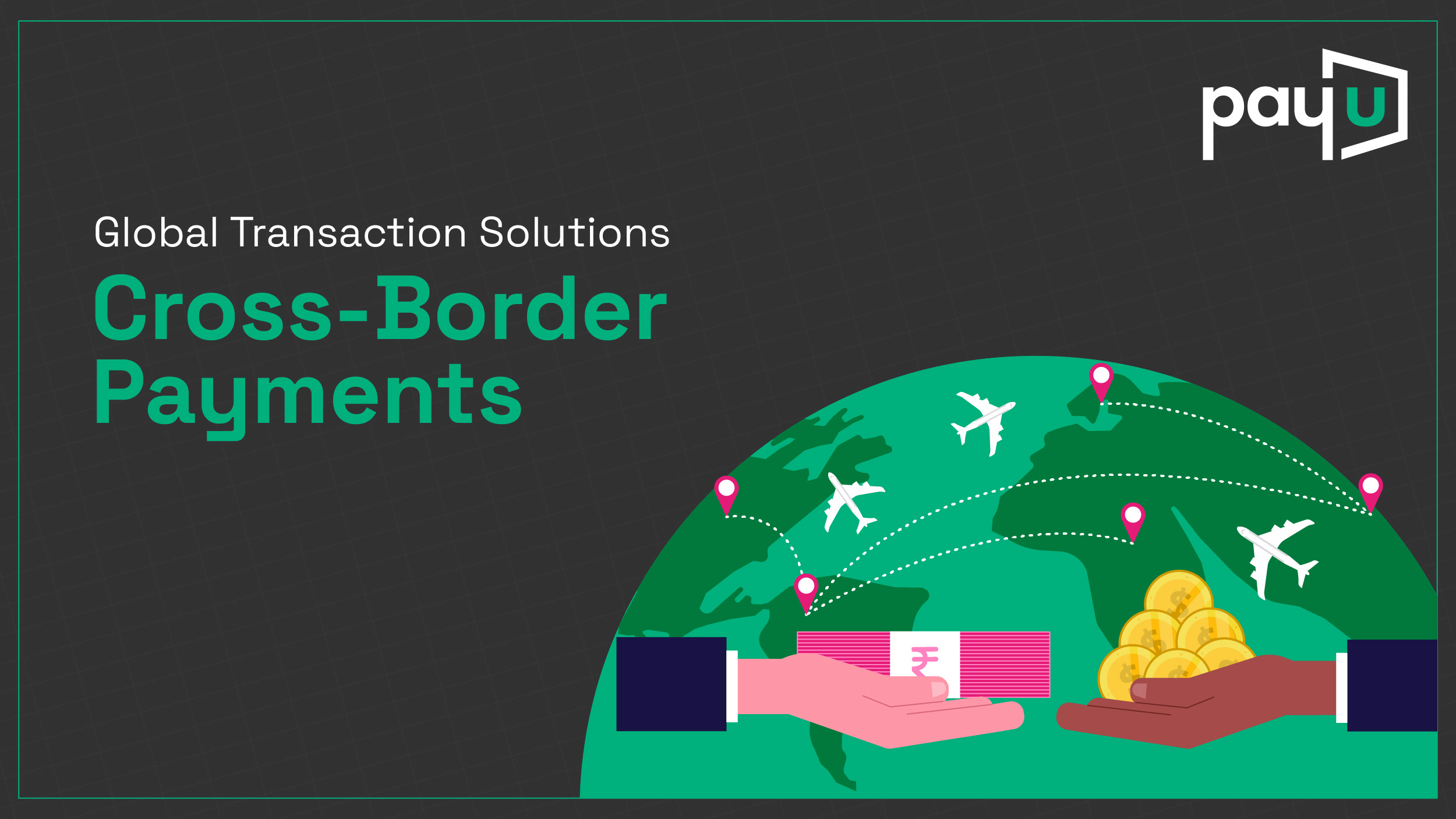
Cross-Border Payments: Methods, Challenges & Solutions
Increasing globalization and mobility have made cross-border transactions the new norm. These transactions are critical to sending money to others personally or doing international investments and global trades. Thanks to modern technology, our world has become a global village powered by cross-border payments as the economic lifeblood.
With advancing technology come new challenges, but innovative solutions help overcome them. The right tools empower users to navigate legal, currency, and technological differences seamlessly. This article explores the complexities of international payments and highlights how technology simplifies and enhances these transactions.
| Table of Contents Understanding Cross-Border Payments Common Methods of Cross-Border Payments Importance of International Payments Comparison: International Payments vs. Domestic Payments Challenges in Cross-Border Payments Innovations in International Payment Solutions Best Practices for Efficient Cross-Border Payouts |
Understanding Cross-Border Payments
Cross-border payments or global payments are transactions where the payer and the recipient are located in different countries. These can be broadly categorized into:
1. Wholesale Payments: Payments often involve large-scale transactions between financial institutions or corporations, like foreign exchange, equity trading, and cross-border lending.
2. Retail Payments: These involve transactions between individuals and businesses or between individuals, such as e-commerce purchases, remittances, and travel-related expenses like hotel bookings and flight tickets.
Common Methods of Cross-Border Payments
There are several ways to facilitate international payments, each with its advantages and considerations:
Wire Transfers: These are a reliable and secure way to send large amounts of money across countries. Banks and financial institutions handle these direct transfers, which are commonly used for significant transactions like buying property or paying international suppliers.
International Checks: International checks are another way to send money across borders. These paper checks, issued by a bank in one country, can be cashed in another and are sometimes used for payments to suppliers or individuals.
Foreign Exchange (Forex) Brokers: Forex brokers help people and businesses convert and transfer money internationally at competitive rates. They are useful for large or frequent transfers, like paying overseas employees or suppliers, often saving money compared to regular bank transfers.
International Money Orders: Prepaid international money orders are a secure way to send smaller amounts abroad. They are often used for personal gifts or small purchases.
Online Payment Platforms: Many Platforms have made cross border payouts easy, especially for online businesses. They are commonly used for smaller transactions but can also process larger payments.
Cryptocurrency Transfers: Cryptocurrencies like Bitcoin and Ethereum allow fast, low-cost global transfers without traditional banks. While not widely accepted, they are popular for peer-to-peer transactions and businesses that accept crypto payments.
Importance of International Payments
Multi-Currency Transactions: Allow companies to conduct business on a global level and capitalize on good exchange rates.
Reliability & Trust: Smooth and secure transactions promote stability in global commerce.
Local Payment Methods: Allow for multiple local payment methods, enhancing customer ease of use.
Access to Global Markets: Enables companies to grow and leverage global opportunities.
Facilitates Collaboration: Encourages collaborations and joint ventures across borders, stimulating economic progress.
Competitive Advantage: The key to prospering in an increasingly interconnected world economy.
Comparison: International Payments vs. Domestic Payments
Understanding the key differences between international and domestic payments is crucial for businesses to operate efficiently and effectively. This knowledge equips businesses with the necessary tools to navigate the complexities of cross-border payments.
| Aspect | International Payment | Domestic Payment |
| Currency | Involve Multiple Currencies | Usually conducted in a single currency |
| Regulations | Follows international regulations | Governed by local financial regulations |
| Processing Time | Takes longer due to currency conversion | Faster since no currency conversion is needed |
| Payment Methods | Supports various local payment methods worldwide | Uses primarily local payment methods |
| Exchange Methods | Affected by currency fluctuations | Stable within the country |
Challenges in Cross-Border Payments
Despite their necessity, cross-border payments present several challenges:
Regulatory Compliance: Different countries have varying regulations governing international payments. Ensuring compliance requires thorough understanding and adherence to these laws to avoid legal complications.
Currency Exchange Rates: Fluctuating exchange rates can impact the final amount received, introducing uncertainty into transactions.
Transaction Costs and Fees: Multiple intermediaries can lead to high fees, reducing the overall value of the transaction.
Processing Times: Traditional methods may involve delays due to time zone differences and banking hours, affecting cash flow and operational efficiency.
Addressing these challenges is vital for creating efficient international payment solutions.
Innovations in International Payment Solutions
Advancements in technology have led to innovative international payment solutions aimed at overcoming traditional challenges in cross-border payouts:
Payment Orchestration Platforms: These platforms integrate multiple payment service providers, enabling businesses to route transactions through the most efficient channels, optimizing acceptance rates, and reducing costs.
Blockchain Technology: Utilizing decentralized ledgers, blockchain offers transparent and secure transactions with reduced processing times and lower fees.
Stablecoins and Cryptocurrencies: Digital currencies pegged to stable assets facilitate quick and borderless transactions, minimizing the impact of currency fluctuations.
Real-Time Payment Systems: Emerging systems enable instant cross-border payments, enhancing cash flow and reducing uncertainty associated with transaction times.
These innovations are reshaping the landscape of global payments, offering more efficient and secure options for cross-border transactions.
The Role of Financial Institutions and Fintech Companies
Both traditional financial institutions and fintech companies play pivotal roles in the evolution of cross-border payments:
Banks: Leveraging their established networks, banks are integrating new technologies to enhance their international payment offerings, focusing on speed and cost-effectiveness.
Fintech Companies: Agile and technology-driven, fintechs are introducing innovative solutions that challenge traditional models, often emphasizing user experience and lower fees.
Collaboration between these entities fosters a more inclusive and efficient global payment ecosystem.
Best Practices for Efficient Cross-Border Payouts
To navigate the complexities of international payments effectively, consider the following best The key to successful international payments is implementing the following best practices:
Know Regulatory Obligations: Research the regulatory requirements of both the sending and receiving countries to help avoid potential difficulties.
Analyze Payment Options: Consider different payment methods available and select the most favorable in terms of cost, speed, and reliability.
Embrace Technology: Modern payment solutions and platforms that use automation, provide real-time tracking, and offer improved security measures.
Monitor Exchange Rates: Keep an eye on currency fluctuations and consider using hedging strategies to mitigate risks associated with exchange rate volatility.
Partner with Reputable Providers: Collaborate with established financial institutions or fintech companies with a proven track record in handling cross-border transactions.
Implementing these practices can lead to more streamlined and secure international payment processes.
Conclusion
Cross-border payments are crucial part of global economy, enabling trade, investment, and personal financial flows across nations. While challenges persist, ongoing innovations and strategic approaches make international payments more reliable and accessible. By understanding the landscape, embracing technological advancements, businesses and individuals can understand and resolve complexities of global payments with greater confidence and success.


